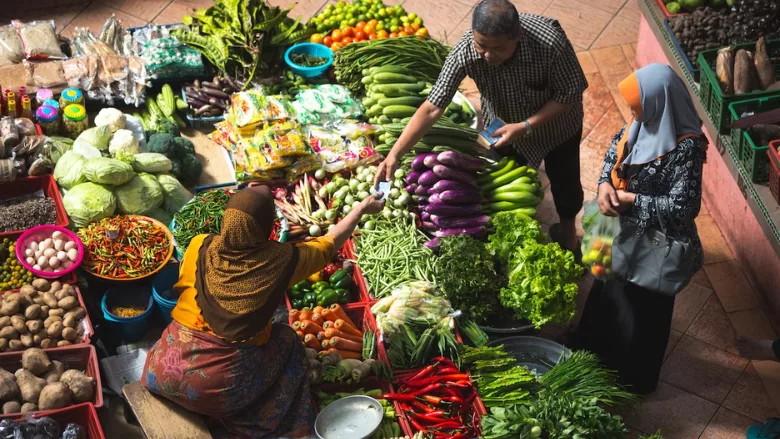WHO Releases Manual for Improving Safety of Traditional Food Markets

Credit: Alex Hudson via Unsplash
The World Health Organization of the United Nations’ (WHO’s) new manual, Five Keys for Safety Traditional Food Markets: Risk Mitigation in Traditional Food Markets in the Asia-Pacific Region, aims to support and guide local authorities, market community, and consumers in enhancing the safety and health of traditional food markets through practical risk mitigation measures and community engagement strategies. The manual provides guidance on the implementation of five keys to promote public health and safety in the context of food safety, zoonotic diseases, and infectious respiratory diseases.
Aligned with the WHO Global Food Safety Strategy and the One Health initiative, the manual was developed after WHO included public health risks associated with traditional food markets as a theme in the agenda of the 150th session of its Executive Board in September 2021. Subsequently, the Executive Board requested the implementation of such measures at the global level.
Traditional food markets play important economic, cultural, and social role and are sources of livelihood for millions of people in urban and rural areas. WHO defines “traditional markets” as “different types of markets descriptions, including wet markets, informal markets, and farmers’ markets that sell foods of animal origin, non-animal origin, and dried goods.” Additionally, the manual refers to “wet markets” as markets with “wet floors resulting from the melting of ice used to ensure the freshness of seafood and by stall holders who routinely clean their stalls by spraying them with water. Usually, they are divided into a ‘wet’ section where fresh produce, meat, fish, and live animals are sold, and a ‘dry’ section where goods such as spices, rice, dried noodles, dried seafood and beans are offered, and where live animals are sometimes housed and slaughtered on site. Wet markets may also be called ‘fresh food markets’ and ‘good food markets’ when referring to markets consisting of numerous competing vendors primarily selling fruits and vegetables. They are defined as markets with municipal ownership and operation.”
Traditional markets carry the risk of spreading foodborne illnesses, zoonotic pathogens, and emerging respiratory diseases. As outlined in the manual, the five keys for safer traditional markets are:
- Keep clean by maintaining good personal hygiene habits, effectively disinfecting market facilities with regular deep-cleaning, and disposing of waste properly
- Avoid contamination by applying a zoning system and avoiding cross-contact
- Keep food products safe with appropriate storage temperatures and conditions, trading only products that are properly labeled and packaged, and storing chemicals away from foods
- Reduce contact with animals by only trading approved animals, dividing market areas into separate zones, separating animals by species, ensuring animal health and hygienic welfare, minimizing human contact, and implementing pest control
- Stay Safe, protect yourself by practicing social distance, wearing a mask, and maintaining well-ventilated spaces.
For each of the five keys, the manual outlines necessary steps that those responsible for managing food markets should take, and strategies for implementation. Specifically, WHO underlines three essential aspects that must be in place to ensure the effectiveness and maintenance of the five keys:
- Regulations and public health policies, for which the manual provides a conceptual regulatory framework as an example
- Risk communication and community engagement
- Training.
WHO is calling on Member States and their appropriate authorities to strengthen their regulatory basis to improve hygiene and sanitation standards in traditional food markets. Such actions can reduce the risks of transmission and spread of zoonotic, foodborne, and emerging infectious diseases, because traditional food markets are often associated as a precursor environment. Such conditions can present food safety and occupational health risks to which risk mitigation measures should be applied.
Looking for quick answers on food safety topics?
Try Ask FSM, our new smart AI search tool.
Ask FSM →








